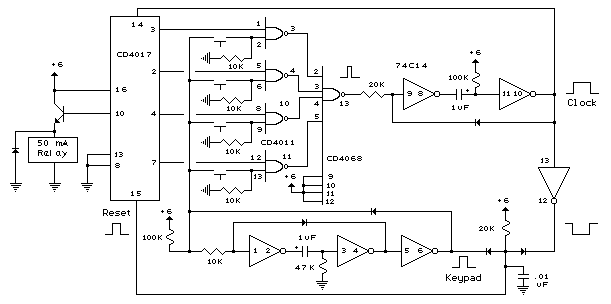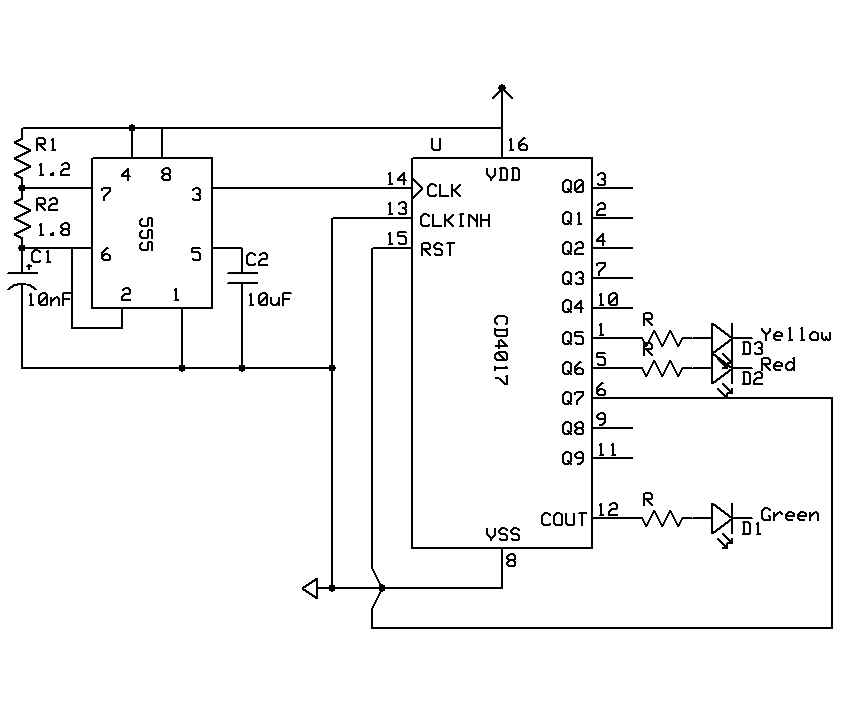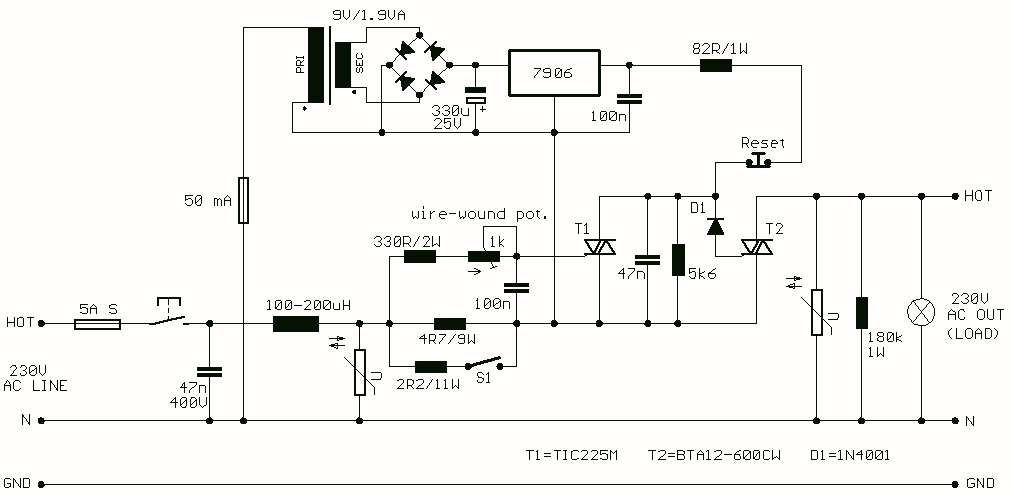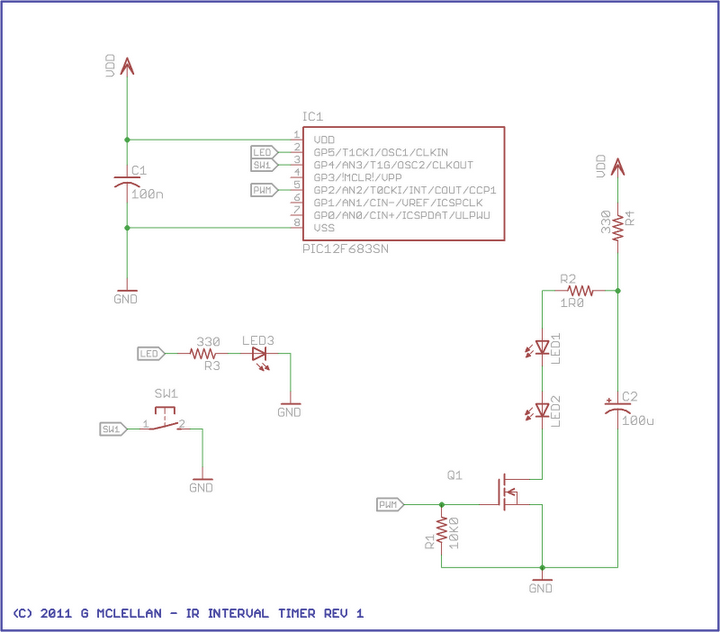
Electronic Buzzer with IC timer NE555
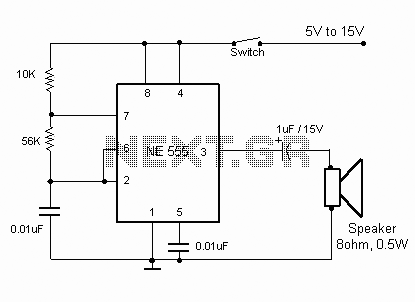
This simple electronic buzzer circuit is based on a timer that operates to generate sound frequencies. The NE555 integrated circuit is utilized as an astable multivibrator, functioning at approximately 1 kHz to produce sound when powered on. The frequency of the sound can be adjusted by modifying certain components.
The circuit design incorporates the NE555 timer, which is widely recognized for its versatility in generating precise timing and frequency signals. In this configuration, it operates in astable mode, where it continuously oscillates between high and low states, thereby generating a square wave output.
The frequency of oscillation can be controlled by adjusting the resistor and capacitor values connected to the NE555 timer. Typically, two resistors (R1 and R2) and a capacitor (C1) are connected to the timing pins of the IC. The relationship between these components determines the frequency of the output signal, which can be calculated using the formula:
\[ f = \frac{1.44}{(R1 + 2R2) \times C1} \]
Where:
- \( f \) is the frequency in hertz (Hz),
- \( R1 \) and \( R2 \) are the resistances in ohms (Ω),
- \( C1 \) is the capacitance in farads (F).
When the circuit is powered, the NE555 timer generates a square wave signal at the output pin (Pin 3), which can be connected to a piezo buzzer. The buzzer converts the electrical signal into audible sound. By adjusting R1, R2, or C1, the pitch of the sound can be modified to meet specific requirements.
Power supply requirements for this circuit typically range from 5V to 15V, making it suitable for various battery-operated devices. The simplicity of the design allows for easy implementation in hobby projects, educational demonstrations, or as a sound alert in various applications. Proper layout and component selection are essential to ensure the circuit operates efficiently and produces the desired sound output.This easy electronic buzzer circuit built based on timer works for gaining the frequency. The IC timer NE 555 used as astable multivibrator operating at about 1kHz and produces a sound when switched on. The sound frequency can be adjusted b.. 🔗 External reference
The circuit design incorporates the NE555 timer, which is widely recognized for its versatility in generating precise timing and frequency signals. In this configuration, it operates in astable mode, where it continuously oscillates between high and low states, thereby generating a square wave output.
The frequency of oscillation can be controlled by adjusting the resistor and capacitor values connected to the NE555 timer. Typically, two resistors (R1 and R2) and a capacitor (C1) are connected to the timing pins of the IC. The relationship between these components determines the frequency of the output signal, which can be calculated using the formula:
\[ f = \frac{1.44}{(R1 + 2R2) \times C1} \]
Where:
- \( f \) is the frequency in hertz (Hz),
- \( R1 \) and \( R2 \) are the resistances in ohms (Ω),
- \( C1 \) is the capacitance in farads (F).
When the circuit is powered, the NE555 timer generates a square wave signal at the output pin (Pin 3), which can be connected to a piezo buzzer. The buzzer converts the electrical signal into audible sound. By adjusting R1, R2, or C1, the pitch of the sound can be modified to meet specific requirements.
Power supply requirements for this circuit typically range from 5V to 15V, making it suitable for various battery-operated devices. The simplicity of the design allows for easy implementation in hobby projects, educational demonstrations, or as a sound alert in various applications. Proper layout and component selection are essential to ensure the circuit operates efficiently and produces the desired sound output.This easy electronic buzzer circuit built based on timer works for gaining the frequency. The IC timer NE 555 used as astable multivibrator operating at about 1kHz and produces a sound when switched on. The sound frequency can be adjusted b.. 🔗 External reference
